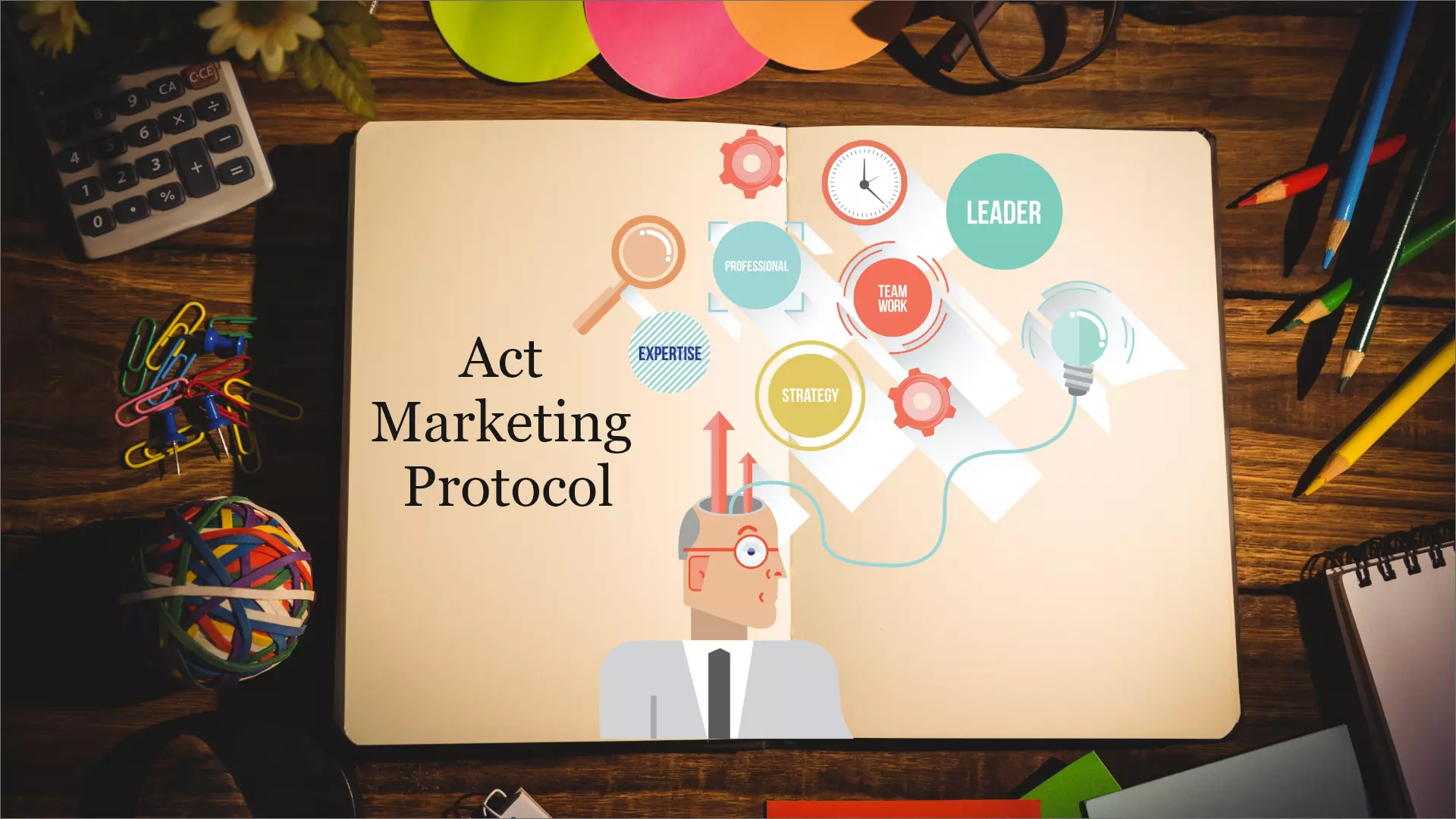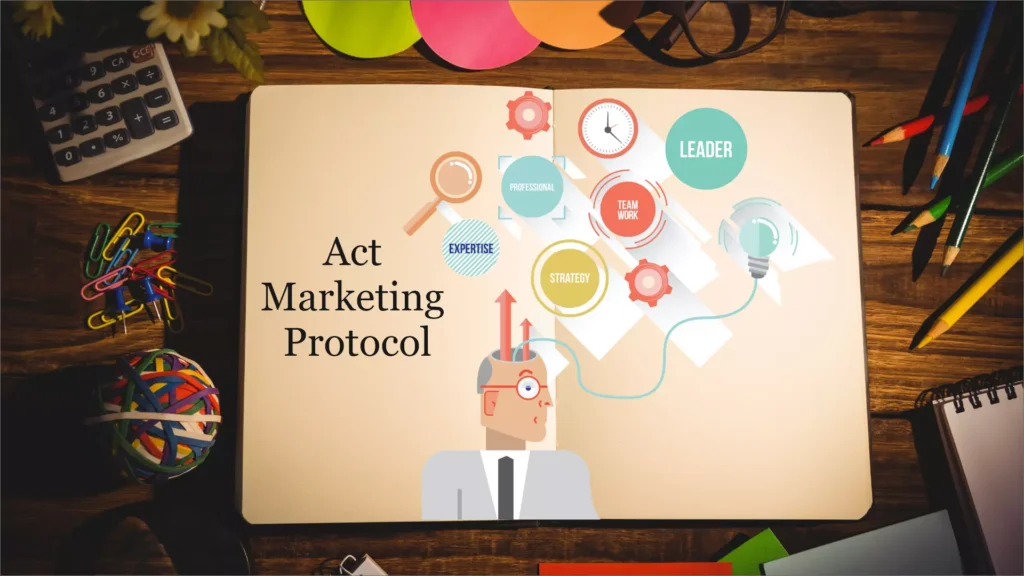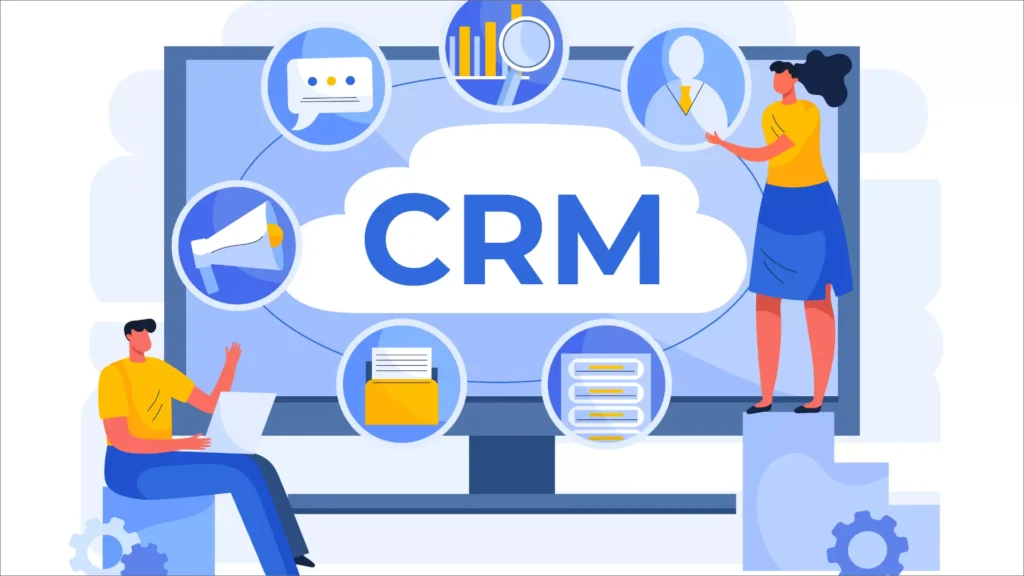
Act Marketing Protocol – 5 Proven Methods to Increase Your Sales & Revenues

In the dynamic landscape of contemporary business, the Act Marketing Protocol emerges as a strategic framework designed to elevate your marketing endeavors and propel your sales and revenues to new heights. This protocol encapsulates a series of proven methods that, when implemented synergistically, create a powerful force for business growth.
Effective marketing is undeniably the linchpin of success in today’s competitive market, serving as the conduit through which businesses connect with their target audience. The Act Marketing Protocol recognizes the paramount importance of this connection and focuses on optimizing various facets of marketing to ensure a holistic and impactful approach.
By delving into the nuances of customer engagement, targeted advertising, and data-driven decision-making, this protocol positions itself as a comprehensive guide for businesses seeking not only to survive but to thrive in the ever-evolving realm of commerce. The subsequent exploration of its key methods promises to unveil actionable insights that can revolutionize your marketing strategies and foster sustained success.
5 Proven Methods to Increase Sales & Revenues
In the ever-evolving landscape of business, achieving substantial sales and revenue growth demands a multifaceted approach.
Here are five proven methods to elevate your strategies and drive tangible results.
Method 1: Targeted Advertising

Targeted advertising is a strategic marketing approach focused on delivering tailored messages to a specific audience segment based on various criteria.
Unlike generic advertising, which aims for broad reach, targeted advertising aims to reach individuals who are more likely to be interested in a product or service.
This precision is achieved by analyzing and leveraging data to understand the preferences, behaviors, and demographics of the intended audience.
Importance of Identifying and Reaching the Right Audience
The essence of targeted advertising lies in its ability to direct marketing efforts toward individuals who are most likely to convert into customers. By pinpointing and reaching the right audience, businesses can optimize their advertising budget, increase conversion rates, and enhance overall return on investment (ROI).
This approach not only maximizes the impact of marketing campaigns but also fosters a deeper connection with potential customers by delivering content that resonates with their specific needs and interests.
Strategies for Creating Targeted Ad Campaigns
Here are some strategies for creating targeted ad campaigns :
i. Utilizing Demographic Data:
Tailoring advertisements based on demographic information such as age, gender, income, and location allows businesses to create messages that align with the characteristics of their target audience. Understanding these demographic nuances ensures that the content is relatable and engaging to the intended viewers.
ii. Leveraging Social Media Advertising:
Social media platforms offer robust tools for targeted advertising. Businesses can leverage the wealth of user data available on platforms like Facebook, Instagram, and LinkedIn to create highly specific audience segments. This enables the delivery of ads to individuals with particular interests, behaviors, and preferences, maximizing the relevance of the content.
iii. Implementing Retargeting Techniques:
Retargeting involves showing ads to individuals who have previously interacted with a brand’s website or products. This technique keeps the brand in front of potential customers, reminding them of their initial interest. Retargeting can be implemented through display ads, social media ads, or email campaigns, creating multiple touchpoints and increasing the likelihood of conversion.
Method 2: Customer Relationship Management (CRM)

Customer Relationship Management (CRM) encompasses a holistic strategy for overseeing a company’s engagements with both existing and prospective customers.
This approach leverages technological solutions to efficiently structure, automate, and harmonize various aspects such as sales, marketing, customer service, and technical support processes.
CRM systems are designed to streamline and enhance the overall customer experience, fostering stronger relationships and, in turn, driving business growth.
The Role of CRM in Boosting Sales and Revenues
CRM plays a pivotal role in boosting sales and revenues by providing businesses with a centralized hub for customer data and interactions. By maintaining a 360-degree view of customer relationships, businesses can better understand individual needs and preferences. This, in turn, enables more effective communication, personalized marketing, and targeted sales efforts.
Additionally, CRM systems empower teams to collaborate seamlessly, ensuring a cohesive and efficient approach to customer engagement.
Implementation of CRM Systems
Here are some ways to implementation of CRM system:
i. Tracking Customer Interactions:
CRM systems facilitate the tracking of every interaction a customer has with a business, from initial contact to post-purchase support. This includes interactions across various channels such as email, phone calls, social media, and website visits. By consolidating this information, businesses can create a comprehensive customer profile, enabling teams to engage with customers more meaningfully and proactively.
ii. Personalization and Customization of Marketing Efforts:
A key strength of CRM lies in its ability to enable personalized and targeted marketing campaigns. By segmenting customers based on their behavior, preferences, and purchase history, businesses can tailor marketing messages to resonate with specific audience segments. This level of personalization enhances the relevance of marketing efforts, increasing the likelihood of conversion and fostering customer loyalty.
iii. Utilizing CRM Analytics for Insights:
CRM analytics provide valuable insights into customer behavior, trends, and the overall performance of marketing and sales efforts. By analyzing this data, businesses can identify patterns, forecast trends, and make informed decisions. This data-driven approach enables continuous improvement, allowing businesses to refine their strategies, optimize customer interactions, and ultimately enhance sales and revenue outcomes.
Method 3: Content Marketing

Quality content stands as the linchpin of any successful marketing strategy. In a digital landscape saturated with information, consumers seek content that is not only relevant but also valuable and engaging.
Quality content serves as the foundation for building trust, establishing authority, and connecting with your audience on a meaningful level.
It goes beyond promoting products or services; it educates, entertains, and solves problems, positioning your brand as a valuable resource in the eyes of your target audience.
Creating a Content Marketing Strategy
Here are the ways to creating content marketing strategy :
i. Blog Posts and Articles
Blogging remains a fundamental element of content marketing. By consistently publishing high-quality blog posts and articles, businesses can showcase expertise, address customer queries, and improve their search engine visibility. Well-crafted content establishes credibility and draws organic traffic, providing opportunities to engage and convert visitors into customers.
ii. Videos and Visual Content
The consumption of visual content, especially videos, has surged in recent years. Incorporating visually appealing content into your strategy enhances engagement and information retention. Whether through product demonstrations, tutorials, or storytelling, videos have the power to convey complex messages in a compelling manner. Visual content is highly shareable, extending its reach across various platforms and amplifying brand visibility.
iii. Social Media Content
Social media platforms are dynamic spaces where content spreads rapidly. Crafting content specifically tailored to each platform—be it concise and impactful on Twitter or visually rich on Instagram—ensures your message aligns with the expectations of each audience. Social media content fosters community engagement, encourages sharing, and facilitates direct interaction with your brand, reinforcing customer relationships.
How Content Marketing Contributes to Sales Funnel Progression
Content marketing is integral to guiding prospects through the sales funnel, from initial awareness to final conversion:
i. Awareness Stage
Informative and entertaining content captures attention, making potential customers aware of your brand and what it offers.
ii. Interest Stage
In-depth content, such as whitepapers or case studies, builds interest by providing valuable insights and solutions to specific problems.
iii. Consideration Stage
Comparative content, like product reviews or comparisons, helps prospects evaluate your offerings against alternatives.
iv. Decision Stage
Persuasive content, such as testimonials or limited-time offers, nudges prospects towards making a purchase decision.
Method 4: Sales Funnel Optimization

The sales funnel represents the customer’s journey from initial awareness of a product or service to making a purchase. Understanding this funnel is essential for businesses aiming to optimize their sales process.
The stages typically include awareness, interest, consideration, and decision, each requiring unique strategies to guide potential customers smoothly through the purchasing journey.
Identifying and Addressing Drop-Off Points
Identifying drop-off points in the sales funnel is crucial for pinpointing areas where potential customers disengage. Analytics tools can provide insights into conversion rates at each stage, helping businesses understand where prospects might be lost. Common drop-off points could include confusing website navigation, lengthy forms, or unclear product information. Addressing these issues is fundamental to ensuring a seamless and uninterrupted customer journey.
Implementing Strategies for Each Stage of the Funnel
1. Awareness
At the awareness stage, the goal is to capture attention and introduce your brand to potential customers. Strategies include:
- Content Marketing: Utilize blog posts, social media content, and videos to create engaging and informative material.
- Paid Advertising: Targeted ads can increase brand visibility and reach a wider audience.
- Search Engine Optimization (SEO): Optimize content for search engines to improve organic discovery.
2. Interest
As prospects move to the interest stage, provide more in-depth information to build engagement. Strategies include:
- Email Marketing: Share newsletters, product updates, and relevant content to nurture leads.
- Webinars and Events: Host virtual or in-person events to showcase expertise and products.
- Interactive Content: Quizzes, surveys, and interactive content encourage engagement.
3. Decision
At the decision stage, prospects are evaluating your offerings against competitors. Strategies include:
- Customer Reviews: Showcase positive testimonials and reviews.
- Product Demos: Provide detailed product demonstrations to highlight key features.
- Competitive Comparisons: Clearly articulate the advantages of choosing your product or service.
4. Action
The final stage is the conversion or action stage. Strategies include:
- Clear Calls-to-Action (CTAs): Make it easy for customers to take the desired action.
- Limited-Time Offers: Create a sense of urgency with promotions or discounts.
- Streamlined Checkout Process: Simplify the purchasing process to minimize friction.
Method 5: Data-Driven Decision Making

In the contemporary landscape of marketing, data stands as a cornerstone for informed decision-making. The importance of data lies in its ability to provide actionable insights into customer behavior, preferences, and the performance of marketing strategies.
By leveraging data, businesses can move beyond intuition and gut feelings, adopting a more strategic and targeted approach to achieve optimal results.
Utilizing Analytics Tools for Data Collection
To harness the power of data, businesses employ advanced analytics tools that facilitate comprehensive data collection and analysis. These tools encompass a range of functionalities, from tracking website traffic and user interactions to monitoring the effectiveness of marketing campaigns.
Google Analytics, for instance, provides valuable metrics on website performance, while social media platforms offer insights into audience engagement. The systematic use of these tools empowers businesses to collect and consolidate relevant data, creating a foundation for data-driven decision-making.
Making Informed Decisions Based on Data Insights
1. Analyzing Customer Behavior
Data analytics allows businesses to delve into customer behavior patterns. By tracking user journeys, businesses can understand how customers interact with their website, which products or content they engage with the most, and where they may encounter obstacles. Analyzing this data enables businesses to tailor their strategies to align with customer preferences, creating a more personalized and effective customer experience.
2. Adjusting Marketing Strategies Based on Performance Metrics
Performance metrics derived from data analytics serve as a compass for guiding marketing strategies. Whether it’s click-through rates, conversion rates, or customer acquisition costs, these metrics offer quantifiable insights into the success of various initiatives.
By regularly reviewing and interpreting these metrics, businesses can identify what is working well and what needs adjustment. For instance, if a particular marketing channel is underperforming, reallocating resources to more effective channels becomes a data-driven decision to optimize outcomes.
Final Words : Act Marketing Protocol
In summarizing the Act Marketing Protocol, it becomes evident that its methods encapsulate a dynamic and comprehensive approach to propel businesses toward heightened sales and revenue growth. By leveraging targeted advertising, optimizing the sales funnel, embracing content marketing, implementing CRM systems, and making data-driven decisions, businesses can orchestrate a symphony of strategies that resonates with their audience.
The essence lies not only in adopting these methods individually but in recognizing the power of a holistic marketing approach, where each element synergizes to create a more potent and effective whole. In this ever-evolving landscape, success hinges on continuous testing and adaptation. Embracing change, staying attuned to customer behavior, and refining strategies based on real-time insights are paramount.
As we navigate the intricate terrain of marketing, the Act Marketing Protocol serves not just as a guide but as a testament to the agility required for sustained success in the dynamic realm of business.
Read More : How Can Google Ads Help You Advance Your Business Goals?
Read More : What is Naked Link in SEO?
Author



